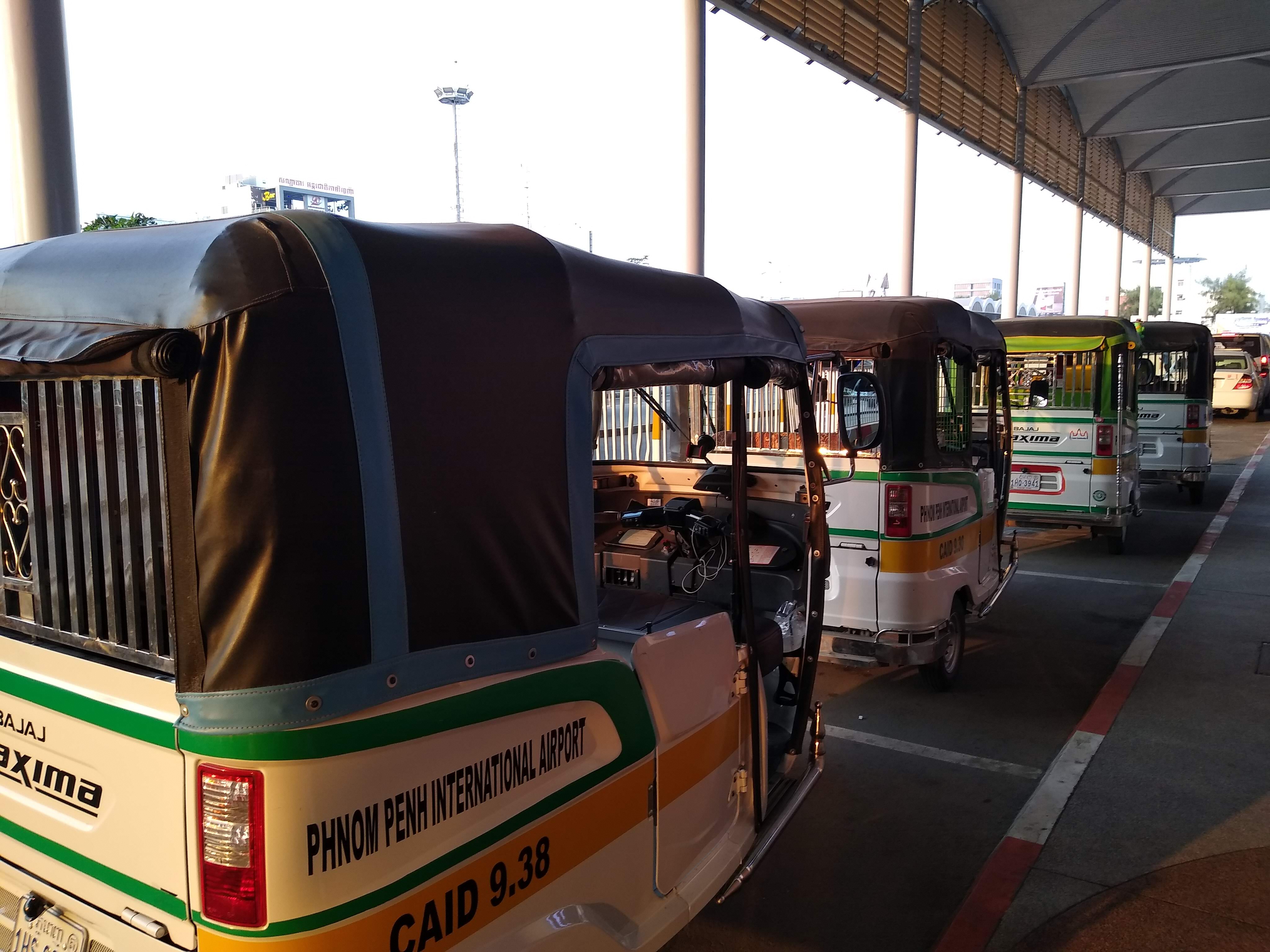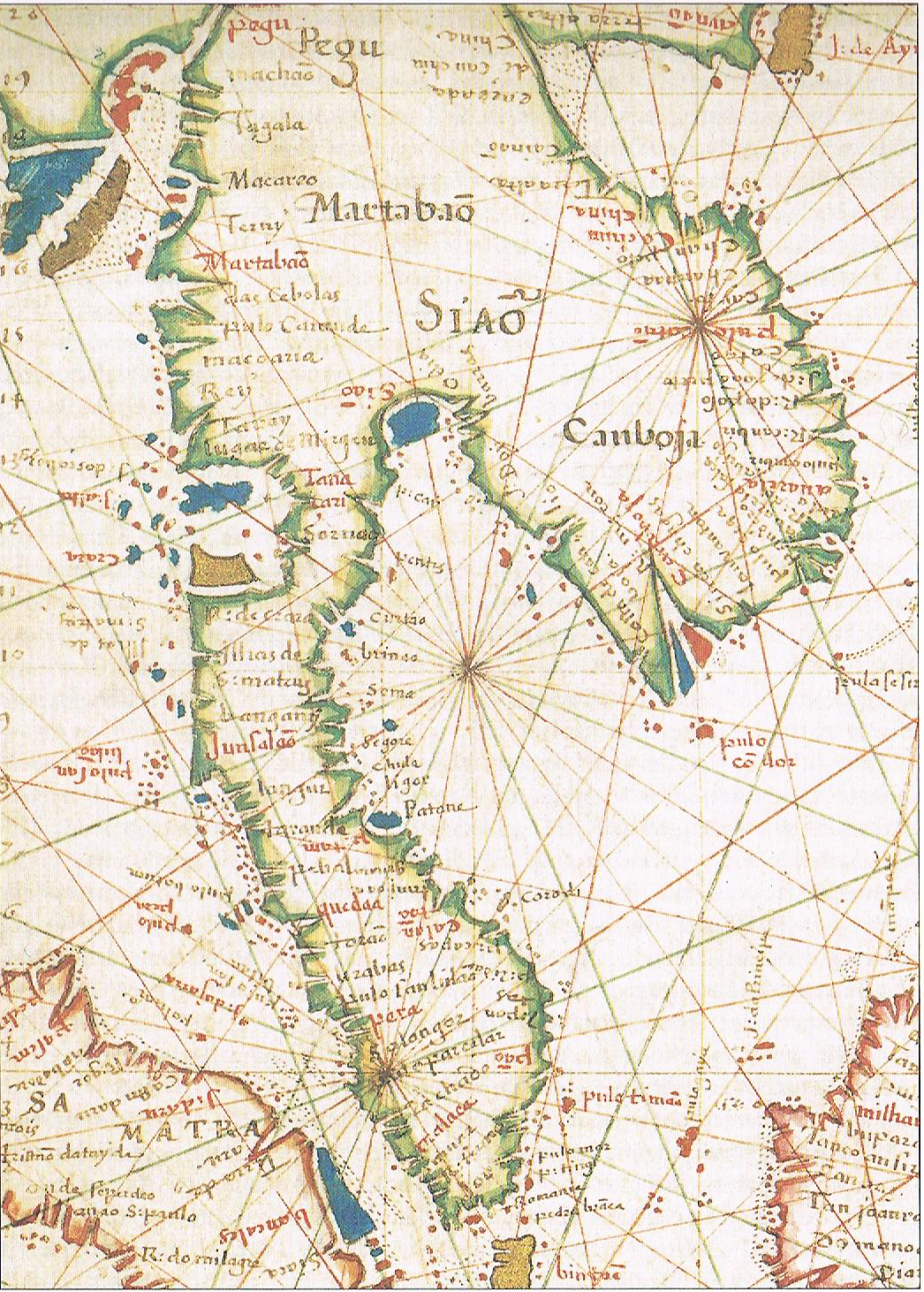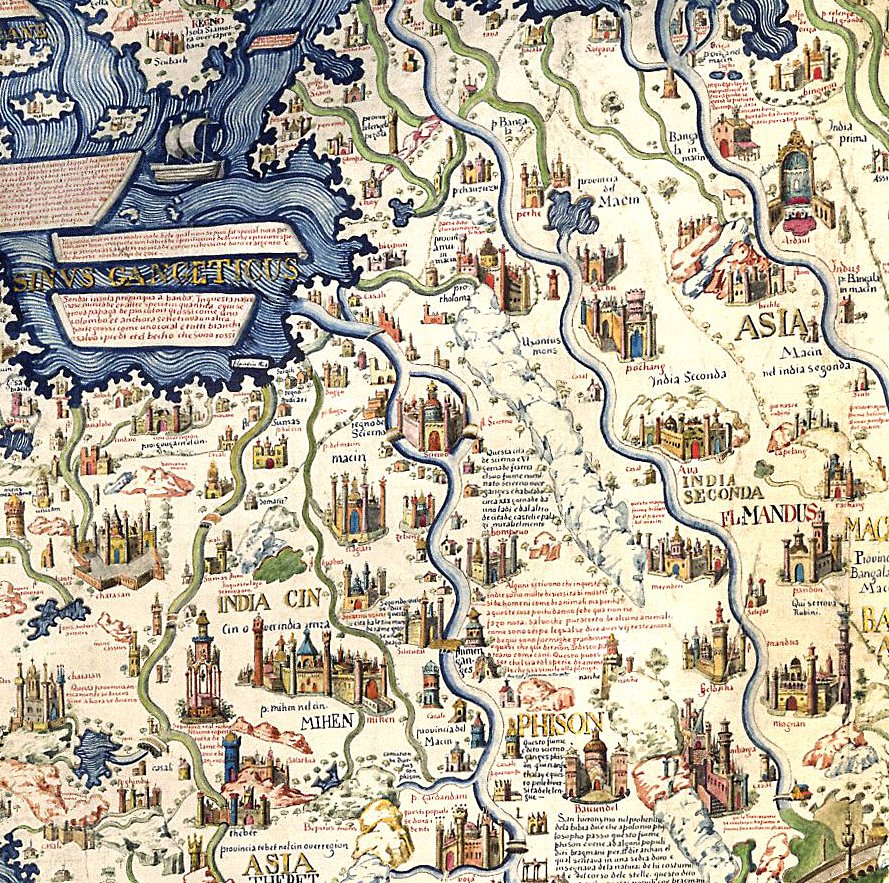|
2003 Phnom Penh Riots
In January 2003, a Cambodian newspaper article falsely alleged that Thai actress Suvanant Kongying claimed that the Angkor Wat belonged to Thailand. Other Cambodian print and radio media picked up the report and furthered nationalistic sentiments, which resulted in riots in Phnom Penh on 29 January where the Thai embassy was burned and commercial properties of Thai businesses were vandalized. The riots reflect the fluid historical relationship between Thailand and Cambodia, as well as the economic, cultural and political factors involving the two countries. Background Historical Historically, the relationship between Siam (modern Thailand) and Cambodia has been extremely fluid, reflecting the region's division into city states rather than nation states. These city states were bound together into empires by more or less strong political, military and tributary ties. In the 14th century, the centre of Thai power passed from Sukhothai to the more southerly Ayutthaya, in territo ... [...More Info...] [...Related Items...] OR: [Wikipedia] [Google] [Baidu] |
Phnom Penh International Airport
Phnom Penh International Airport , formerly Pochentong International Airport , is the busiest international airport in Cambodia and serves as the country's main international gateway. It is Cambodia's second largest airport by area after the new Siem Reap–Angkor International Airport. It is located in the Pou Senchey District, west of Phnom Penh, the nation's capital. The airport will be replaced by Techo International Airport. History During the Japanese occupation of Cambodia they built as many as fifteen airports through the country, including on the site of the current airport. It is reported that these airports were built using slave labor. After independence from France in 1953, King Norodom Sihanouk ordered new airstrips or improvements to existing sites. During the Cambodian War, the airport was used extensively for airlifts of military and civilian supplies. Between October and December 1973, C-130s of the 374th Tactical Air Lift brought 3,000 tons of rice ... [...More Info...] [...Related Items...] OR: [Wikipedia] [Google] [Baidu] |
Cambodia
Cambodia, officially the Kingdom of Cambodia, is a country in Southeast Asia on the Mainland Southeast Asia, Indochinese Peninsula. It is bordered by Thailand to the northwest, Laos to the north, and Vietnam to the east, and has a coastline along the Gulf of Thailand in the southwest. It spans an area of , dominated by a low-lying plain and the confluence of the Mekong river and Tonlé Sap, Southeast Asia's largest lake. It is dominated by a tropical climate and is rich in biodiversity. Cambodia has a population of about 17 million people, the majority of which are ethnically Khmer people, Khmer. Its capital and most populous city is Phnom Penh, followed by Siem Reap and Battambang. In 802 AD, Jayavarman II declared himself king, uniting the warring Khmer princes of Chenla Kingdom, Chenla under the name "Kambuja".Chandler, David P. (1992) ''History of Cambodia''. Boulder, CO: Westview Press, . This marked the beginning of the Khmer Empire. The Indianised kingdom facilitated ... [...More Info...] [...Related Items...] OR: [Wikipedia] [Google] [Baidu] |
Khmer Rouge
The Khmer Rouge is the name that was popularly given to members of the Communist Party of Kampuchea (CPK), and by extension to Democratic Kampuchea, which ruled Cambodia between 1975 and 1979. The name was coined in the 1960s by Norodom Sihanouk to describe his country's heterogeneous, communist-led dissidents, with whom he allied after the 1970 Cambodian coup d'état. The Kampuchea Revolutionary Army was slowly built up in the forests of eastern Cambodia during the late 1960s, supported by the People's Army of Vietnam, the Viet Cong, the Pathet Lao, and the Chinese Communist Party (CCP). Although it originally fought against Sihanouk, the Khmer Rouge changed its position and supported Sihanouk following the CCP's advice after he was overthrown in a 1970 coup d'état by Lon Nol who established the pro-American Khmer Republic. Despite a massive American bombing campaign (Operation Freedom Deal) against them, the Khmer Rouge won the Cambodian Civil War when they Fall of Phnom Pen ... [...More Info...] [...Related Items...] OR: [Wikipedia] [Google] [Baidu] |
Cambodian Civil War
The Cambodian Civil War (, Romanization of Khmer#UNGEGN, UNGEGN: ) was a civil war in Cambodia fought between the Communist Party of Kampuchea (known as the Khmer Rouge, supported by North Vietnam and China) against the government of the Kingdom of Cambodia (1953–1970), Kingdom of Cambodia and, after October 1970, the Khmer Republic, which had succeeded the kingdom after a coup (both supported by the United States and South Vietnam). The conflict was part of the Indochina Wars, Second Indochina War (1955–1975). The conflict was linked to the Vietnam War. The North Vietnamese People's Army of Vietnam (PAVN) was involved to protect its bases in eastern Cambodia, which were crucial to its military effort in South Vietnam. This presence was initially tolerated by Prince Norodom Sihanouk, Sihanouk, the Cambodian head of state, but domestic resistance combined with China and North Vietnam aiding the anti-government Khmer Rouge caused him to request help from the Soviet Union ... [...More Info...] [...Related Items...] OR: [Wikipedia] [Google] [Baidu] |
Franco-Thai War
The Franco-Thai War (October 1940 – 28 January 1941, ; ) was fought between Thailand and Vichy France over certain areas of French Indochina. Negotiations shortly before World War II had shown that the French government was willing to alter the boundaries between Thailand and French Indochina, but only slightly. Following the Fall of France in 1940, Major-General Plaek Phibunsongkhram (popularly known as "Phibun"), the prime minister of Thailand, decided that France's defeat strengthened the Thais' negotiating position to regain the vassal state territories that were ceded to France during King Chulalongkorn's reign. The German and Italian military occupation of Metropolitan France rendered France's hold on French Indochina and its other overseas territories tenuous. The colonial administration was cut off from outside help and supplies. After the invasion of French Indochina in September 1940, Japan forced the French to allow them to set up military bases. The seemingly subse ... [...More Info...] [...Related Items...] OR: [Wikipedia] [Google] [Baidu] |
Nationalist
Nationalism is an idea or movement that holds that the nation should be congruent with the State (polity), state. As a movement, it presupposes the existence and tends to promote the interests of a particular nation,Anthony D. Smith, Smith, Anthony. ''Nationalism: Theory, Ideology, History''. Polity (publisher), Polity, 2010. pp. 9, 25–30; especially with the aim of gaining and maintaining its sovereignty (self-governance) over its perceived homeland to create a nation-state. It holds that each nation should govern itself, free from outside interference (self-determination), that a nation is a natural and ideal basis for a polity, and that the nation is the only rightful source of Politics, political power. It further aims to build and maintain a single national identity, based on a combination of shared social characteristics such as culture, ethnicity, geographic location, language, politics (or the government), religion, traditions and belief in a shared singular history, ... [...More Info...] [...Related Items...] OR: [Wikipedia] [Google] [Baidu] |
Post-Angkor Period
The post-Angkor period of Cambodia (), also called the Middle period, refers to the historical era from the early 15th century to 1863, the beginning of the French protectorate of Cambodia. As reliable sources (for the 15th and 16th centuries, in particular) are very rare, a defensible and conclusive explanation that relates to concrete events that manifest the decline of the Khmer Empire, recognised unanimously by the scientific community, has so far not been produced. However, most modern historians have approached a consensus in which several distinct and gradual changes of religious, dynastic, administrative and military nature, environmental problems and ecological imbalance coincided with shifts of power in Indochina and must all be taken into account to make an interpretation. In recent years scholars' focus has shifted increasingly towards human–environment interactions and the ecological consequences, including natural disasters, such as flooding and droughts. Stone ... [...More Info...] [...Related Items...] OR: [Wikipedia] [Google] [Baidu] |
Siege Of Angkor
The fall of Angkor, also known as the sack of Angkor or siege of Angkor, was a seven-month siege of the Khmer capital Angkor by the Ayutthaya Kingdom. After the Khmer refused to recognize Ayutthaya authority, the Ayutthaya besieged Angkor and sacked the capital city. The Khmer King Ponhea Yat fled the city to Basan and later to Chaktomuk (in present-day Phnom Penh). Though the Khmer Empire was already in decline, the conquest of Angkor delivered the final blow and the empire fell. Angkor was subsequently abandoned. After the Fall of Angkor, the king moved the capital first to Basan and later to Chaktomuk, initiating the period known as the Post-Angkor period. History First invasion of 1353 Invasions from the Uthong dynasty of Ayutthaya began in 1353 when, according to the Non Chronicles, Ramathibodi I seized Angkor. An Angkorian Khmer prince retook Angkor in 1358 Results Khmer defensive victory. Second invasion in 1370 The Suphannaphum dynasty of Ayutthaya besieged A ... [...More Info...] [...Related Items...] OR: [Wikipedia] [Google] [Baidu] |
Ayutthaya (city)
Phra Nakhon Si Ayutthaya (, ), or locally and simply Ayutthaya is the capital of Phra Nakhon Si Ayutthaya province of Thailand. Ayutthaya was the capital of the Ayutthaya Kingdom. Located on an island at the confluence of the Chao Phraya and Pa Sak rivers, Ayutthaya is the birthplace of the founder of Bangkok, King Rama I. The ruins of the old city are preserved in the Ayutthaya Historical Park. Etymology The name ''Ayutthaya'' is derived from Sanskrit अयोध्य - Ayodhya and is from the Thai national epic '' Ramakien''; (from Khmer: ''preah'' ព្រះ ) is a prefix for a noun concerning a royal person, and (from Pali: ''nagara'') designates an important or capital city. History Prior to Ayutthaya's traditional founding date, archaeological and written evidence has revealed that Ayutthaya may have existed as early as the late 13th century as a water-borne port town. Further evidence of this can be seen with Wat Phanan Choeng, which was founded in 1324, ... [...More Info...] [...Related Items...] OR: [Wikipedia] [Google] [Baidu] |
Sukhothai Province
Sukhothai (, ) is one of Thailand's seventy-six provinces (''changwat''); it lies in lower northern Thailand. Neighboring provinces are Phrae, Uttaradit, Phitsanulok, Kamphaeng Phet, Tak, and Lampang. Sukhothai can be translated as 'dawn of happiness'. Etymology The modern-day province of Sukhothai was named after the Sukhothai Kingdom that once ruled the area, which in turn borrowed its name from the Sanskrit terms ''sukha'' ( 'happiness') + ''udaya'' ( 'rise', 'emergence'), meaning 'dawn of happiness'. Geography Sukhothai is in the valley of the Yom River in the lower north of Thailand. The provincial capital, Sukhothai Thani is north of Bangkok and south of Chiang Mai. The province covers . The Khao Luang Mountain Range, with its four main peaks: Khao Phu Kha, Khao Phra Mae Ya, Khao Chedi, and Pha Narai, lies within the Ramkhamhaeng National Park in the south of the province. Si Satchanalai National Park is in the northwest, protecting the mountainous forest areas ... [...More Info...] [...Related Items...] OR: [Wikipedia] [Google] [Baidu] |
Tribute
A tribute (; from Latin ''tributum'', "contribution") is wealth, often in kind, that a party gives to another as a sign of submission, allegiance or respect. Various ancient states exacted tribute from the rulers of lands which the state conquered. In the case of alliances, lesser parties may pay tribute to more powerful parties as a sign of allegiance. Tributes are different from taxes, as they are not collected in the same regularly routine manner that taxes are. Further, with tributes, a recognition of political submission by the payer to the payee is uniquely required. Overview The Aztec Empire is another example, as it received tribute from the various city-states and provinces that it conquered. Ancient China received tribute from various states such as Japan, Korea, Vietnam, Cambodia, Borneo, Indonesia, Sri Lanka, Nepal, Myanmar and Central Asia. Aztec Empire Tributes as a form of government The Aztecs used tributes as a means for maintaining control over con ... [...More Info...] [...Related Items...] OR: [Wikipedia] [Google] [Baidu] |
Nation State
A nation state, or nation-state, is a political entity in which the State (polity), state (a centralized political organization ruling over a population within a territory) and the nation (a community based on a common identity) are (broadly or ideally) congruent. "Nation state" is a more precise concept than "country" or "state", since a country or a state does not need to have a predominant national or ethnic group, ethnic group. A nation, sometimes used in the sense of a common ethnicity, may include a diaspora or refugees who live outside the nation-state; some dispersed nations (such as the Romani people, Roma nation, for example) do not have a state where that ethnicity predominates. In a more general sense, a nation-state is simply a large, politically sovereign country or administrative territory. A nation-state may be contrasted with: * An empire, a political unit made up of several territories and peoples, typically established through conquest and marked by a domin ... [...More Info...] [...Related Items...] OR: [Wikipedia] [Google] [Baidu] |







